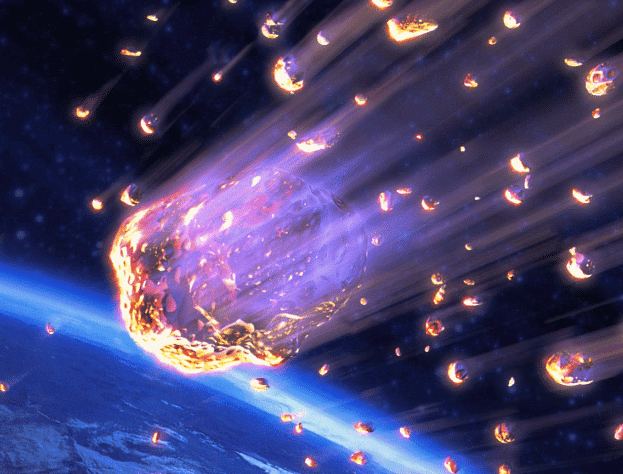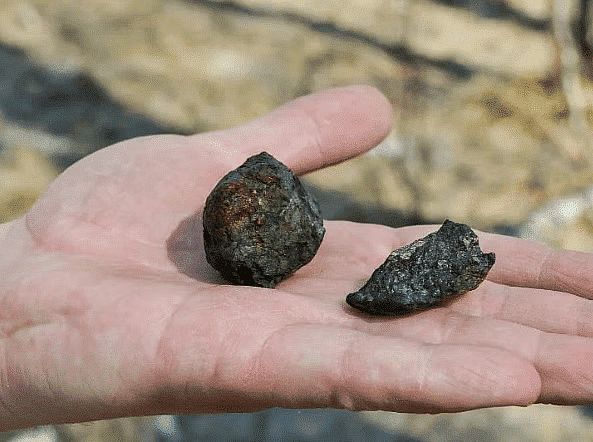ACT Exam > ACT Notes > Science for ACT > Meteors
Meteors | Science for ACT PDF Download
| Table of contents |

|
| Meteoroids |

|
| Meteors |

|
| Meteor Showers |

|
| Meteorites |

|
| Why Are Meteorites Significant? |

|
| What Do Meteorites Typically Look Like? |

|
| What Kinds of Meteorites Have Been Found? |

|
Meteoroids
- Meteoroids are celestial bodies ranging from dust grains to small asteroids, designated as such while they remain in space.
- Originating from various sources such as comets, asteroids, and even celestial bodies like the Moon and other planets, meteoroids are typically remnants of larger bodies that have been fragmented or ejected. These space rocks come in diverse compositions, including rocky, metallic, or combinations thereof.
Meteors
- When meteoroids enter the Earth's atmosphere, or that of another planet, at high velocities and undergo combustion, they transform into meteors, commonly known as "shooting stars."
- Occasionally, meteors can manifest as bright phenomena, surpassing the luminosity of Venus, earning the designation "fireballs." Scientists estimate that Earth receives approximately 48.5 tons (44,000 kilograms) of meteoritic material daily.

Meteor Showers
- Meteor showers, characterized by an abundance of meteors visible within a specific timeframe, occur when the Earth traverses the trail of dusty debris left by comets, and occasionally asteroids. These showers often recur annually or at regular intervals and are named after nearby stars or constellations corresponding to the apparent origin of the meteors in the sky.
- Among the renowned meteor showers are the Perseids, peaking around August 12 each year, composed of remnants from Comet Swift-Tuttle. Other notable meteor showers include the Leonids, Aquarids, Orionids, and Taurids, associated with comets Tempel-Tuttle, Halley, and Encke, respectively. The majority of meteoric debris, ranging from the size of a grain of sand to a pea, disintegrates in the atmosphere before reaching the Earth's surface. However, some meteoric dust is collected by high-altitude aircraft for analysis in NASA laboratories.
Meteorites
- Meteorites are remnants of meteoroids that successfully navigate through the Earth's atmosphere and impact the ground. Typically ranging in size from that of a pebble to that of a fist, meteorites represent a fraction of the original meteoroid's mass.
- As meteoroids plunge through Earth's atmosphere at speeds reaching tens of thousands of miles per hour, the intense pressure causes them to disintegrate, resulting in a brilliant flare. Consequently, less than 5% of the original meteoroid usually reaches the Earth's surface.
- It's rare to recover meteorites following a meteor shower. Most meteor showers originate from comets, whose constituent material is relatively fragile. Consequently, small comet fragments typically disintegrate upon atmospheric entry and do not survive to become meteorites. While there is a possibility of meteorites originating from meteor showers such as the Taurids and Geminids, definitive evidence linking them to specific remnants has yet to be established.
- It can be difficult to tell the difference between a meteorite and an Earth rock, but there are some special places where they’re much easier to identify: deserts. In sandy deserts with large, open regions of sand and few rocks, dark meteorites stand out. Similarly, meteorites can be much easier to spot in cold, icy deserts, such as the frozen plains of Antarctica.
Why Are Meteorites Significant?
- Meteorites that descend to Earth offer a glimpse into the primordial materials that coalesced to form planets billions of years ago. Through the study of meteorites, researchers can unravel the intricate history of our solar system.
- This encompasses understanding the age and composition of various planetary building blocks, as well as discerning the surface and interior temperatures of asteroids and the extent of past impacts that have altered their materials.

 |
Download the notes
Meteors
|
Download as PDF |
Download as PDF
What Do Meteorites Typically Look Like?
Meteorites may share similarities with terrestrial rocks, but they often possess a distinctive burned exterior known as a "fusion crust," imparted as they traverse the atmosphere. This feature lends a shiny appearance to the outer surface of meteorites.
Classifying Meteorites:
- Meteorites are broadly categorized into three main types: irons, stony meteorites, and stony-irons. While stony meteorites constitute the majority of meteorite falls, irons are more frequently discovered long after their descent. Iron meteorites, being denser, are easier to differentiate from Earth rocks.
Origins of Meteorites:
- The majority of meteorites discovered on Earth originate from fragmented asteroids, although some derive from celestial bodies like Mars or the Moon. While there's a theoretical possibility of fragments from Mercury or Venus reaching Earth, no definitive identifications have been made.
Determining Meteorite Origins:
- Scientists employ various methodologies to ascertain the origins of meteorites. This includes utilizing photographic records of meteorite falls to trace their orbits back to the asteroid belt. Additionally, compositional analyses help match meteorites with specific asteroid classes. Furthermore, the age of meteorites, dating back up to 4.6 billion years, provides crucial insights into their origins and evolution.
- Martian rocks can be identified by the presence of trapped gas pockets that align with the atmospheric compositions observed by satellites and rovers on Mars. Likewise, if the composition of a meteorite mirrors that of rocks collected during the Apollo missions from the Moon, it's probable that the meteorite originated from the lunar surface. Thanks to NASA's Dawn mission, we've determined that a specific class of meteorites known as "howardite-eucrite-diogenite" (HED) originated from the asteroid Vesta, located in the main asteroid belt between Mars and Jupiter.
What Kinds of Meteorites Have Been Found?
- Various types of meteorites have been discovered, with the vast majority, approximately 99.8%, originating from asteroids. The remaining fraction, roughly 0.2%, is evenly divided between meteorites sourced from Mars and the Moon.
- Over 60 Martian meteorites have been identified, propelled from Mars due to impacts by meteoroids. These meteorites consist of igneous rocks formed through the crystallization of magma. While bearing similarities to Earth rocks, they possess distinctive compositions indicative of their Martian origin.
- Additionally, close to 80 lunar meteorites have been found, exhibiting mineralogy and composition akin to the lunar rocks collected during the Apollo missions. However, they also display unique characteristics distinguishing them from samples obtained from other parts of the Moon. Research conducted on lunar and Martian meteorites supplements the insights gleaned from the analysis of Apollo Moon rocks and the exploration of Mars through robotic missions.
The document Meteors | Science for ACT is a part of the ACT Course Science for ACT.
All you need of ACT at this link: ACT
|
486 videos|517 docs|337 tests
|
Related Searches















